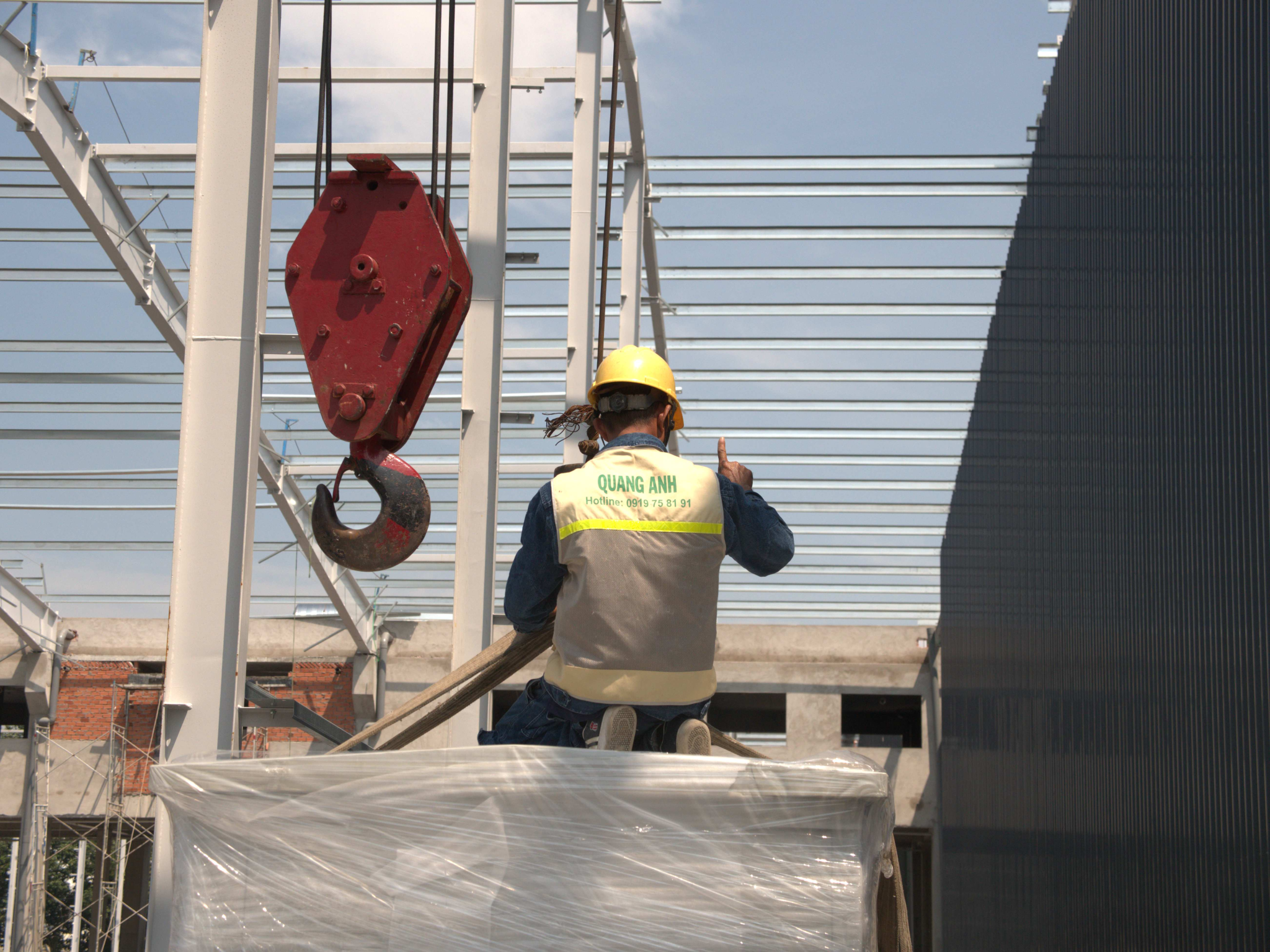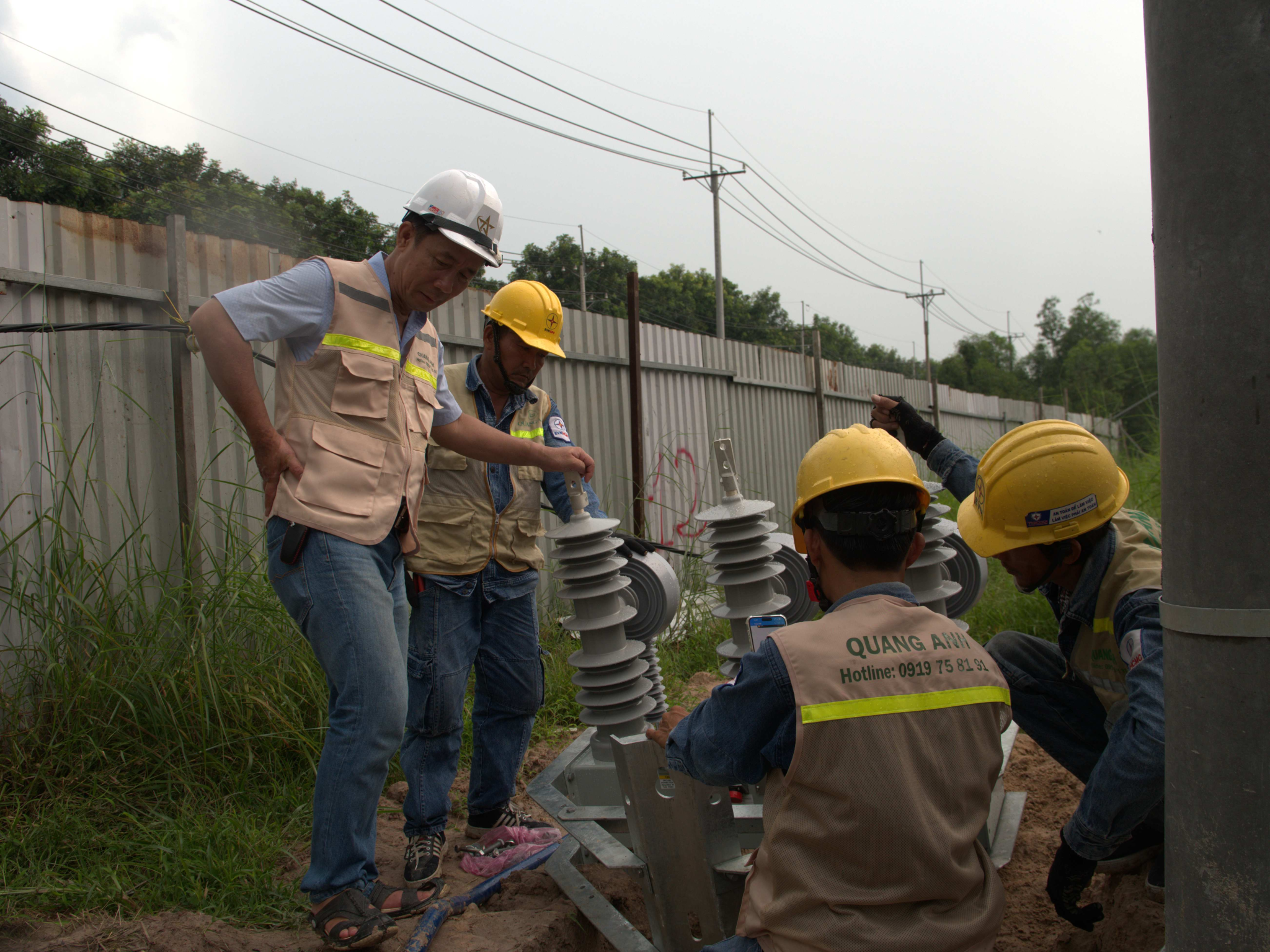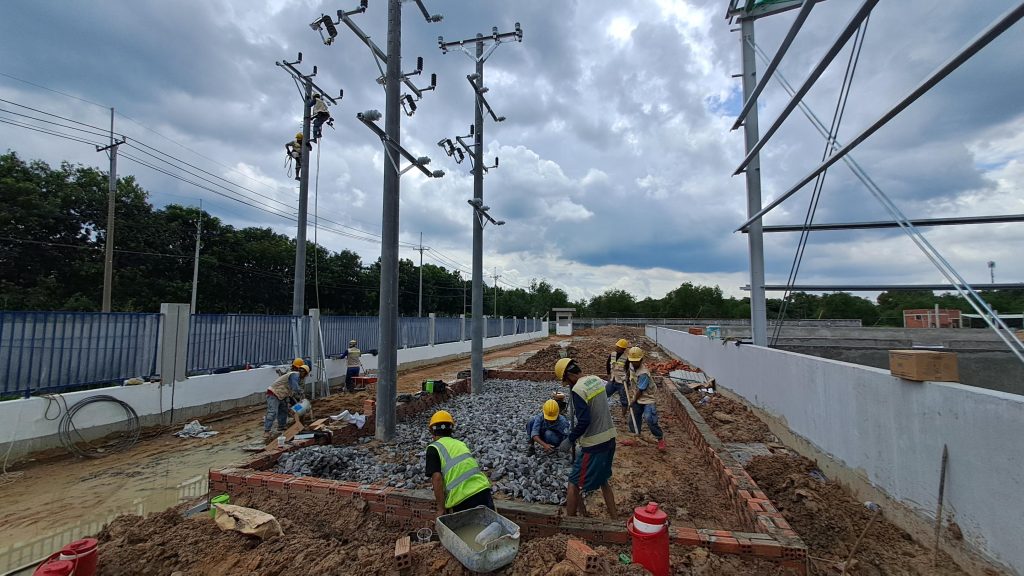News
Factory Electrical Installation: Ensuring Safe and Efficient Process
Factory electrical installation is a critical step in establishing an industrial electrical system, ensuring production efficiency and safety.
Overview of Factory Electrical Installation
Factory electrical installation demands precision and strict adherence to safety standards. It is a decisive step in ensuring the electrical system operates stably and meets the power needs of the entire factory.
Electrical installation is an essential part of the construction process for manufacturing plants, ensuring the effective and safe operation of systems. The factory electrical installation process requires execution through clear and stringent phases as follows:
- Survey and Design:
- Survey current electrical system: Evaluate equipment and technical condition.
- Positioning and calculation of energy consumption: Determine the power needs from the equipment and machinery in the factory.
- Design the electrical system: Create detailed drawings for the electrical system, including selecting equipment from reputable brands like ABB, Mitsubishi, LS, Eaton, and Schneider to suit the specific requirements of the factory.
- Installation Execution:
- Install the main power cable system: Implement electrical cable installation from the substation to the factory, using either overhead or underground methods.
- Install cable trays and ladders: Set up the cable tray and ladder system to manage and protect electrical conductors.
- Install electrical equipment: Including main distribution boards (MSB), molded case circuit breakers (MCCB), air circuit breakers (ACB), and motor control systems.
- Testing and Inspection:
- Check and test operate the system: Ensure the system operates stably and efficiently.
- Completing and handover: Meet customer requirements and gather feedback.
Important Components
- Safety protection for workers and equipment: Strict adherence to safety standards to ensure a risk-free production environment.
- Efficiency and stability: Continuous operation of the electrical system, optimizing energy efficiency.
- Optimize operational costs: Calculate and use appropriate conductors to minimize energy losses.
Design and Construction Standards
- Compliance with technical regulations: Commitment that the design and construction systems meet safety and efficiency standards.
- Key indispensable components:
- Main power cable system.
- Cable trays and ladders.
- Main devices like MCCB, ACB.
Factory electrical installation requires a comprehensive process from survey, design, construction, inspection to maintenance and care. The goal is to ensure safety, efficiency, and cost optimization for the business.

Detailed Process of Factory Electrical Installation
The factory electrical installation process begins with surveying the existing electrical system and identifying the need for upgrades. Then, position electrical equipment and calculate energy consumption to design an efficient industrial electrical system. Afterward, execute the installation of power cables and cable trays, along with protective devices, ensuring the system operates safely and effectively.
-
Survey and Design
- Survey existing electrical systems: This is the first step in the factory electrical system installation process, aimed at assessing the current state and determining necessary corrections or upgrades.
- Design electrical system: Create detailed designs for the factory’s electrical system based on power consumption needs and national safety standards under TCVN.
-
Selection and Preparation of Equipment
- Determine required power source: Calculate the power capacity needed for the factory and select suitable electrical equipment like ABB switchboards, Cadivi conductors.
- Select electrical equipment: This step includes selecting necessary electrical devices like switchboards, conductors, and cables, ensuring compliance with electrical safety standards.
-
Installation Execution
- Install protective tubes and cables: Ensure all electrical cables are protected according to technical standards, which is key for a durable operating system.
- Install switchboards and equipment: Installing Mitsubishi switchboards and panels must be carried out accurately per the approved design to ensure safety and performance optimization.
- Install the main power supply cable system: Set up the main cables providing power to the system, requiring high precision and adherence to strict standards.
-
Connecting and Testing
- Connect electrical devices: Correctly perform connections to ensure system safety.
- Check and test run: Conduct system trial runs to validate operation and meet electrical safety standards.
-
Acceptance and Warranty
- System acceptance: After testing completion, carry out acceptance to verify the system operates as required.
- Warranty and maintenance: Perform warranty, maintenance to keep systems in good working condition, abiding by electrical safety standards.

Safety Considerations in Electrical Installation
To ensure electrical safety during the installation process, adherence to electrical safety standards, use of personal protective equipment, and technical training for staff are required. Every step in the installation process must aim to minimize risks and maintain a safe working condition.
In the field of electrical installation, electrical installation safety must be prioritized above all. Designing the electrical system is the first step that should be performed carefully, with a detailed design to meet the energy demands and specific conditions of the project. Choosing an appropriate power supply scheme ensures load capacity and system requirements, helping reduce risks.
Basic electrical safety requires workers to take measures such as avoiding contact with water, turning off the power before repairing, and using electric testers to check wires. These measures are vital in protecting workers’ health and lives.
Protecting electrical conductors is an indispensable element. Using protective tubes to shield wires and applying electrical tape on bare terminals helps prevent water stagnation or flooding, simultaneously warding off the risk of electric shock.
Equipment load capacity should also be secured by choosing equipment suitable for the environment and technical characteristics of the project. Having a detailed electrical network diagram and installing a general circuit breaker helps effectively control the system, allowing quick disconnecting when necessary.
Using electrical protective gear such as insulating gloves and protective goggles is essential to safeguard workers from dangerous situations. Additionally, routine electrical inspections and maintenance should be conducted to prevent unexpected incidents and sustain device performance.

Factory electrical installation not only ensures operational efficiency but also significantly contributes to the sustainable development strategies of the enterprise. The installation processes are designed to optimize the electrical system, ensuring safety and meeting power consumption needs effectively.
Contact QuangAnhCons via Hotline: +84 9 1975 8191 for detailed consultation on factory electrical installation.
QuangAnhCons offers factory electrical installation services with a team of experienced engineers, ensuring safety and efficiency for industrial electrical systems.

 Tiếng Việt
Tiếng Việt 简体中文
简体中文 Deutsch
Deutsch 日本語
日本語 한국어
한국어 ไทย
ไทย Русский
Русский Français
Français
